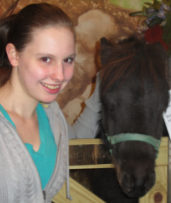When you get hit and when you don’t
“I was 3, I remember being very scared. I remember him yelling at mother. He bent my mother over the edge of the balcony and was hitting her. I yelled at him to stop and he held me by the neck till I passed out,” said sophomore Anthony Tellez.

These images are photo illustrations depicting life in an abusive household.
This is only the first of many other incidences Tellez can recall of his father’s abuse, including threats to burn his hands on the stove.
This can be a desolate reality for anyone living with an abuser. Unfortunately, domestic abuse isn’t a rare thing.
“On most days more than 20,000 calls are made to domestic violence hotlines nationwide. In Missouri, 34,841 adults, youth and children received domestic violence services in 2014,” according to the National Coalition Against Domestic Violence.
During 2014 there were 14 domestic violence homicides i
n Kansas City alone.
Since many domestic violence cases are a he-said-she-said, when the cops are called they use inconsistencies in statements and injuries to deduct who is telling the truth.
“If we can’t determine who the primary aggressor is then a lethality assessment is filled out,” said KCPD Sgt. Thompson.
A lethality assessment is basically a form of a bunch of questions that the cops ask. If nothing can be determined the victim is often left with a few places to get help. This can range from counseling to a place that offers help and a place to stay.
Though a harder thing to see, which is also very prominent, is mental abuse. This is something that you can’t call the cops for but can’t leave an even longer impression. Junior Burket had to be taken out of a class for this reason. Burket had enough of her abuser causing her to do poorly in the class, have panic attacks in class, and skip school. Even with this and notes from Burket’s therapist, it took her counselor about three months to finally move her out of the class. This is an example of how people who have already gone through so much have to continue to fight against the person who abused them even after they are out of the situation.

These images are photo illustrations depicting life in an abusive household.
At least Tellez and Burket knew they were being treated badly and got out of the situation, but you can’t always see who a person is, even if all the signs are there, till it’s too late.
Jena Mackey was a young woman with her whole life ahead of her. She was going for her law degree at KU. She had been a lobbyist for NOW, National Organization of Women, and volunteered for a domestic violence shelter before law school and knew the signs of an abuser. In 2008, she broke up with her boyfriend because he was controlling and refused to understand how much time school took. This man had a criminal record for beating his previous girlfriend, but he told everyone that she had lied and faked her injuries. Men thought he was a jerk while women thought he was cool. He asked Mackey to take his daughter shopping after they’d broken up. When she met him at his home, his daughter wasn’t there.
Mackey’s ex had lured her into a trap and beat her to death. Mackey’s story is a sad ending to a common problem that people like Tellez and Burket were able to get out of.
A problem that other students at Oak Park have faced, though some either won’t get help or they don’t see that they need help. No matter the person and no matter the type, abuse is an immoral thing. Don’t hide it and don’t let friends hide it. Get out and get help.

I’m Aurora Riley, a photographer for the Oak Park magazine and website. I fell in love with photography last year in journalism one. I like to read and...





